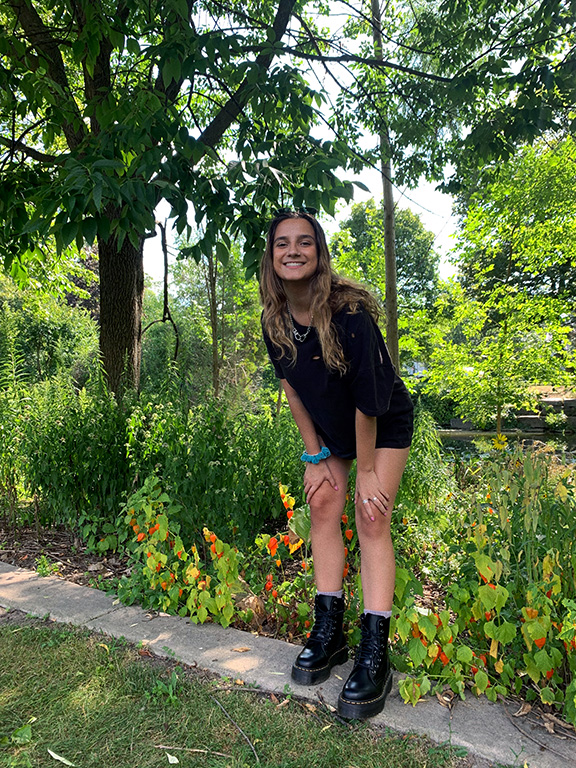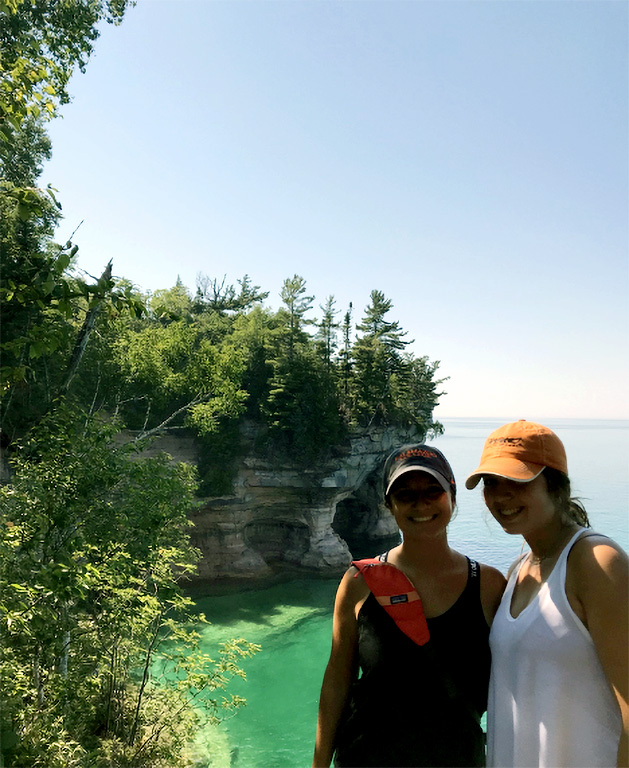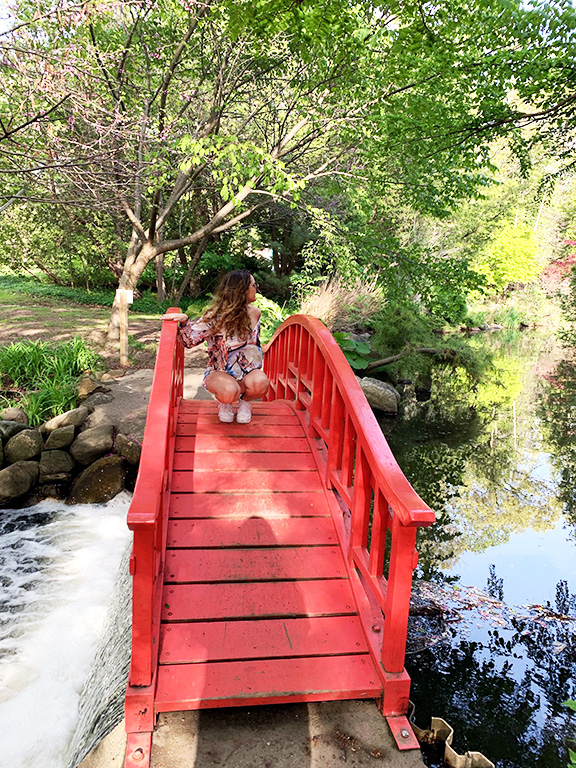Hanley Sustainability Institute

Chance meeting at swim club leads to friendship, choice of University of Dayton and sustainability major
By Mark Gokavi
Pilar Bertollini said her journey to studying sustainability at the University of Dayton began when she was 9 years old and walked into the Forest Hills Swim Club in Birmingham, Michigan.
A girl two grades older than her, Kathleen Lemire, became Bertollini’s swimming and diving partner and a friend to play games and cards with in the snack shack.
“When we got older, Kathleen told me she was going to the University of Dayton, and I’d never heard of it, so I looked into it,” Bertollini said. “I was only a junior in high school when she was starting her first year at UD, and I remember reading all about UD and thinking it was perfect for me.
“I loved how far away it felt from home for me to start my new life, but not too far away if I ever got homesick. I also loved the emphasis on community and how much everybody cared about each other; becoming a family with friends, classmates, and teachers.”
Naturally, the UD junior dove into the new sustainable watershed track because she enjoyed an environmental science class she took at Seaholm High School.
“I love learning about the interactions organisms have with their natural environment, and the important roles they play that grants us life,” Bertollini said. “Although, these interactions are often overlooked and undervalued, which is a leading factor to the current environmental issues our world faces such as pollution, deforestation, and loss of biodiversity.
“I believe with UD's sustainability courses, I will have the tools necessary for protecting Earth's resources and communicating the importance of sustainable practices to society.”
She said the steps necessary to restore the planet are attainable, starting with individuals becoming more conscious consumers by looking beyond the label.
“To move up in scale, we need to encourage altruistic investing and the pouring of money into corporations that are concerned with the welfare of the planet,” Bertollini said. “Businesses should work to prioritize and fund sustainable development practices, because if achieved, the world would be better for us all — including businesses. Lastly, on the largest scale, we need to support sustainable policies that promote environmentally responsible operations.”
She believes “nobody is too small to make a difference” and that being committed to what she’s studying has helped her flourish as an advocate for human and environmental rights, as a worker and as a student.
Bertollini hopes to become an environmental consultant so she can help businesses become more environmentally and socially responsible for the impacts they have on the planet.
While also planning to complete a minor in marketing, she hopes to bring expertise on sustainable strategies and data analysis to the business world to improve waste management, cut down on carbon emissions, and introduce sustainable technology.
“I believe me trying out for the swim team that day was meant to happen,” Bertollini said. “And I was meant to be a Flyer at the University of Dayton.”
For more sustainability news and information, visit HSI’s news blog, the Hanley Sustainability Institute website and the ssustainability program website.


